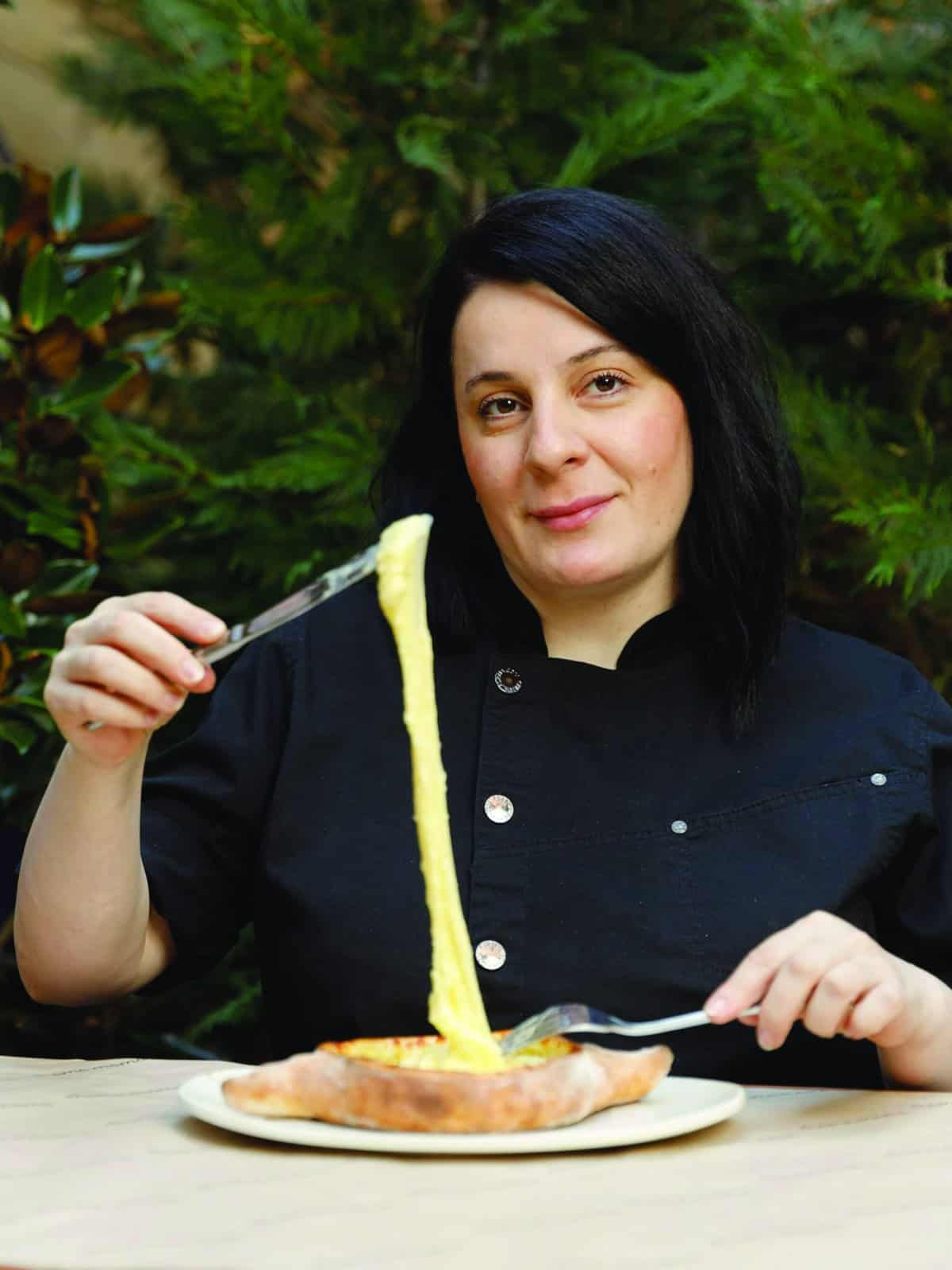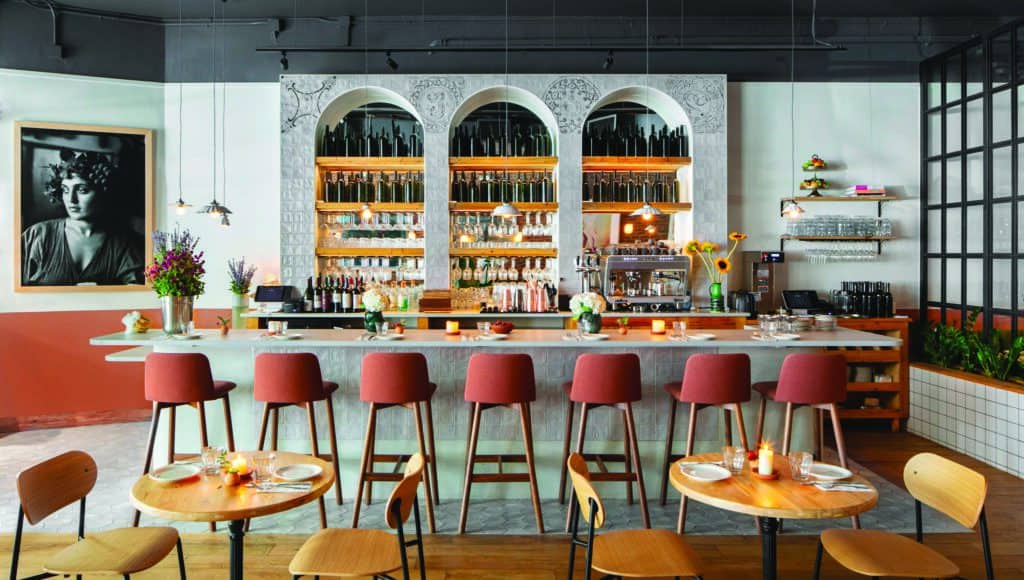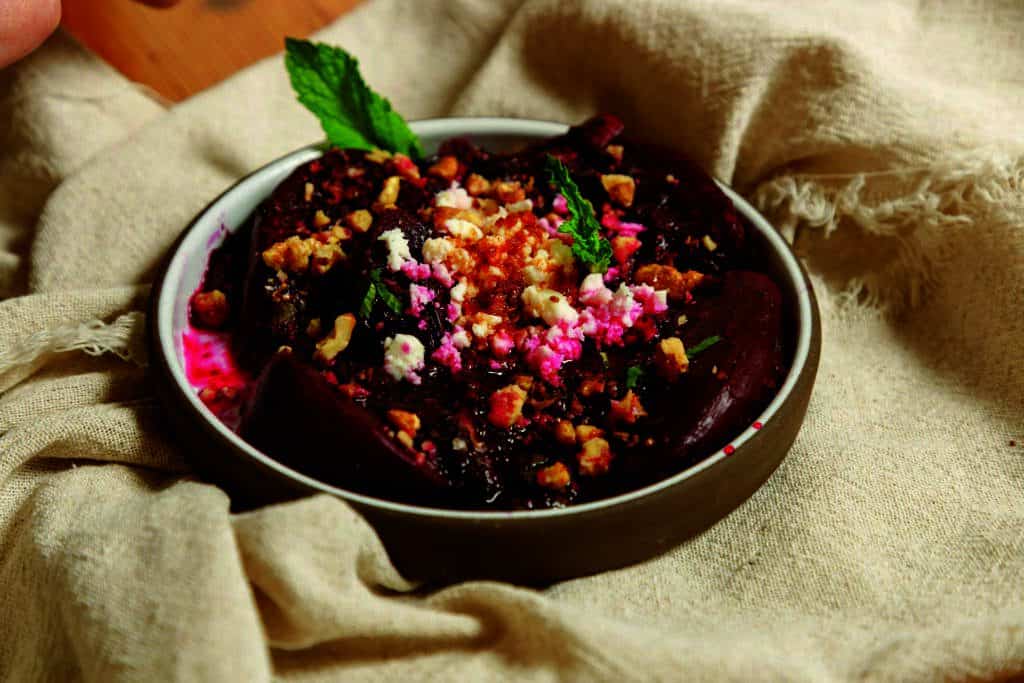Come for khachapuri, but stay for everything else at Manhattan’s Chama Mama.

Nino Chiokadze, the chef at Manhattan’s Georgian restaurant Chama Mama, with the spot’s signature khachapuri.
If you’re at all tuned into cheese media, you’ve likely encountered mesmerizing images of khachapuri, a traditional Georgian bread bowl baked with a luscious filling of cheese. (Georgian, to be clear, as in the Republic of Georgia, not the southern US state—no offense to pimento cheese.) Dotted with cubes of butter and an egg yolk and mixed tableside to create molten cheese ribbons, khachapuri “puts on its own show,” says Tamara Chubinidze, owner of Manhattan’s Georgian restaurant Chama Mama. “It’s very Instagrammable.”
She believes khachapuri is what brings people in the door for the first time, but once they’re in, they’re hooked by the vibrant and diverse flavors: everything from pickled flower buds known as jonjoli to sturdy and garlicky soup dumplings called khinkali. Georgian cuisine isn’t a one-trick pony, and Chubinidze was determined to demonstrate its breadth with a sleek and contemporary setting that defied preconceptions about dining in a Caucasus-inspired restaurant. “It’s like the Italians,” she says. “They don’t just have pizza,” nor decor that is only characterized by red-checkered tablecloths.

A love letter to Georgia, Chama Mama’s name is more than just an approachable rhythm or rhyme scheme. It also speaks to Chubinidze’s personal history. In Georgian, “chama” simply means “to eat,” Chubinidze explains. “This word is probably used in about 90 percent of all conversations,” given that the culture is centered around food and feasting. “Mama,” however, has a twist. “In Georgian, ‘mama’ ironically means ‘father,’” she says, recognizing that internationally speaking, “mama” typically connotes mothers and grandmothers across a spectrum of languages.
Chubinidze’s father brought her to the US when she was just a teenager. He worked a variety of jobs, eventually becoming an importer of Georgian foods that included various breads, cheeses, and tkemali: a dynamic, sweet-and-sour sauce made from preserved green plums that’s used on everything from beets to meats.

When she was a young woman, Chubinidze didn’t foresee a life in restaurants, but it was this access to traditional foods from her homeland, combined with a passion for wanting to share them, that eventually inspired her to open Chama Mama in 2016. Her father was able to import many native ingredients through his business and became her wish-granting “golden fish,” a reference to a Russian fable about a fish who grants wishes to the fisherman who caught it.
Georgia is located along the historic Silk Road, and as a result, various non-indigenous ingredients and techniques passed through the country, which Georgians made their own. In Georgian culture, food is synonymous with love, so everything is made from scratch. Rich and savory ingredients such as walnuts and mushrooms are prominently featured, yet bright components such as tarragon, cilantro, and pomegranate seeds also appear in Georgian cuisine. Cheese often plays a starring role, not only in the Instagrammable khachapuri dish, but also in recipes highlighting fresh and creamy farmer’s cheese, as well as salty and smoky pasta filata–style cheeses eaten alongside various breads and spreads.
As for seeking out your own taste of Georgia, Chubinidze says, “Come for the khachapuri, stay for everything else.”




